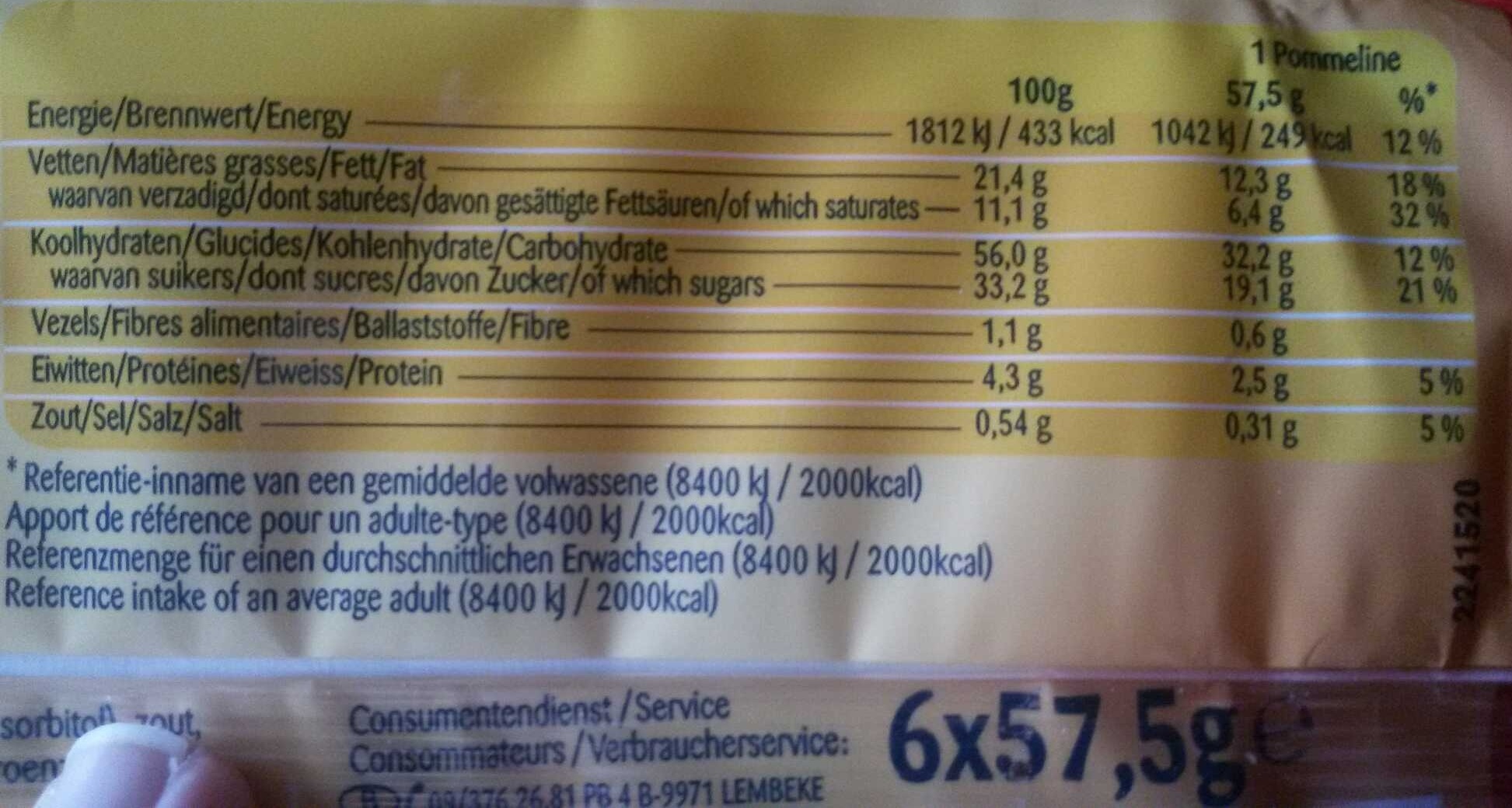Pommeline - Tartelette aux pommes - Lotus - 6 x 57.5 g
This product page is not complete. You can help to complete it by editing it and adding more data from the photos we have, or by taking more photos using the app for Android or iPhone/iPad. Thank you!
×
Barcode: 5410126060836 (EAN / EAN-13)
Common name: Tartelette aux pommes
Quantity: 6 x 57.5 g
Packaging: Bag, Individual bag
Brands: Lotus
Categories: Snacks, Sweet snacks, Biscuits and cakes, Cakes, Sweet pies, Pies, Tartlets
Labels, certifications, awards: No colorings, fr:13 % de pommes
Link to the product page on the official site of the producer: http://www.lotusbakeries.be/fr/products/...
Matching with your preferences
Environment
Packaging
Transportation
Threatened species
Report a problem
Data sources
Product added on by arcko
Last edit of product page on by inf.
Product page also edited by alm1412, countrybot, kiliweb, packbot, quechoisir, scanbot, yuka.RnFSUUx2c0NqOGtWbU5wdi9DM3c1TlJlbUtPb1FraTBHdkVhSVE9PQ.










